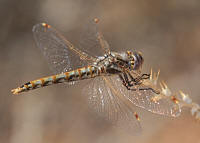Dragonflies of North America
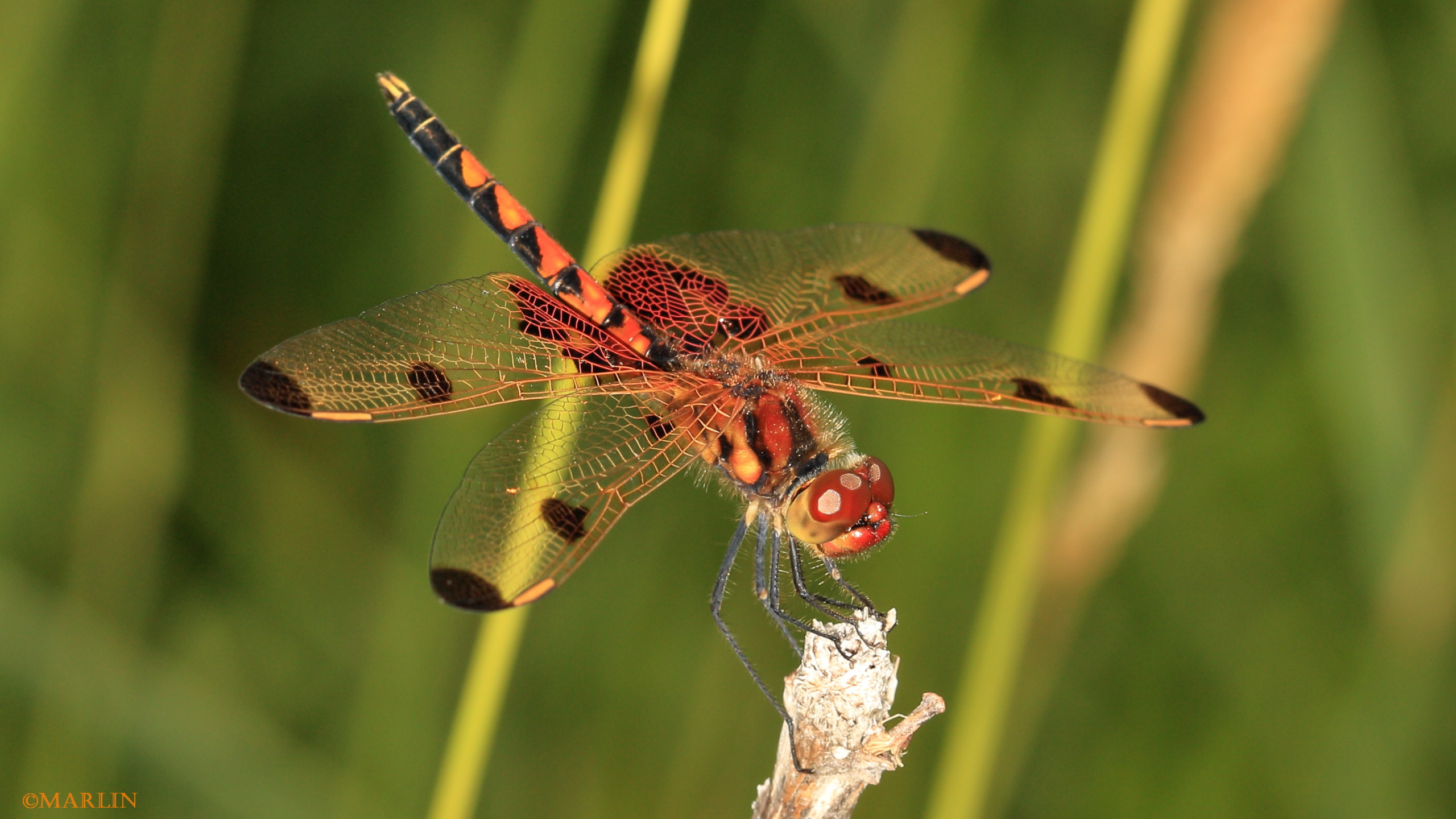 Calico Pennant Dragonfly
Calico Pennant Dragonfly
Order Odonata: dragonflies and damselflies date back 300 million years, to the Carboniferous Period of the Paleozoic Era. These colorful, enchanting insects are revered second only to the butterflies in the popular psyche.
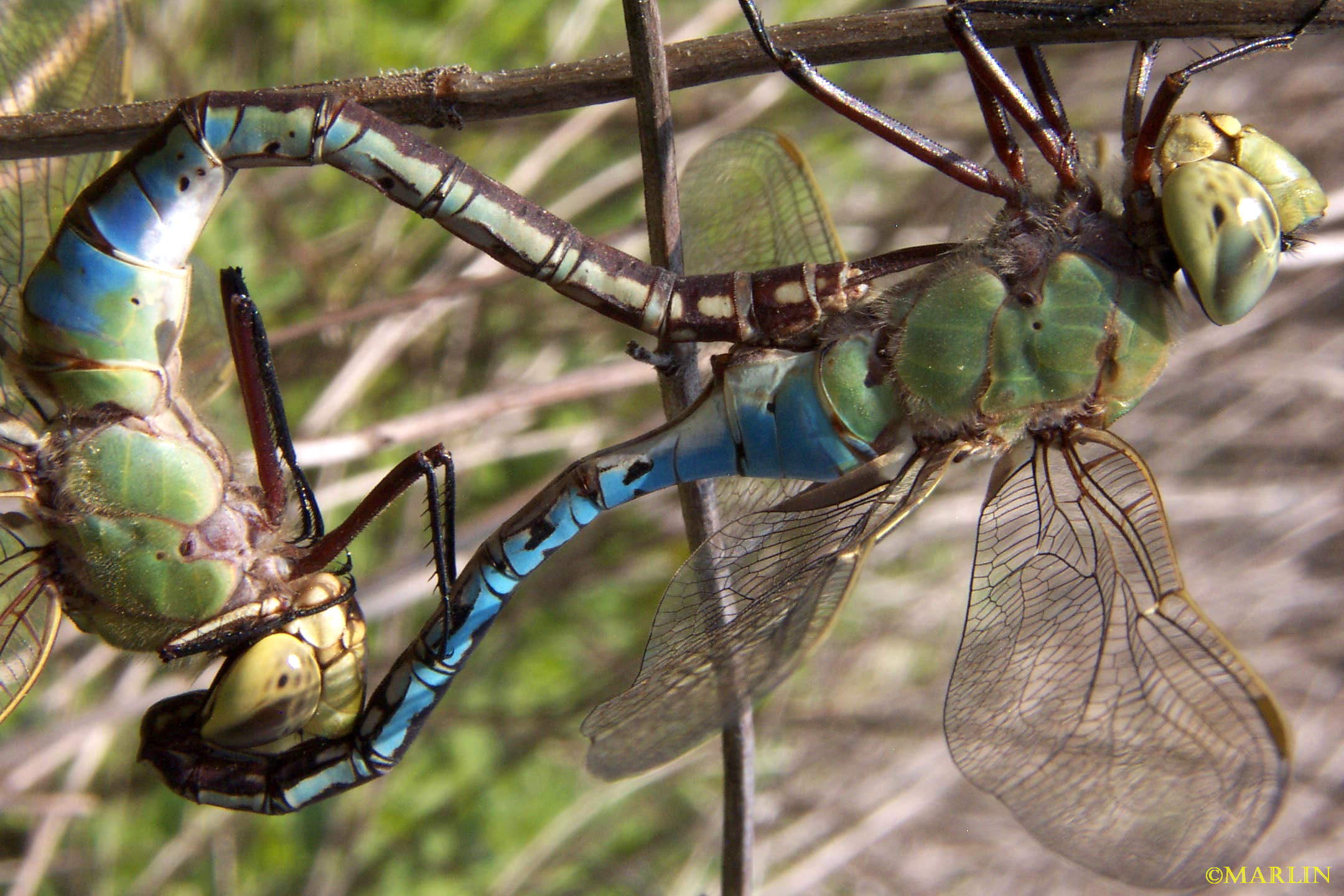 Green Darner Mating Wheel, Anax junius
Green Darner Mating Wheel, Anax junius
Dragonflies have excellent eyesight. Their compound eyes have up to 30,000 facets, each of which is a separate light-sensing organ or ommatidium, arranged to give nearly a 360° field of vision. Odonates are completely harmless – they do not sting or bite. Indeed, they are beneficial in the same respect spiders and other predators are beneficial – they keep the burgeoning insect population in check. Many of these species prey on each other; I often see dragonflies with damsels in their clutches. Dragonflies are among the most ancient of living creatures. Fossil records, clearly recognizable as the ancestors of our present day odonates, go back to Carboniferous times which means that the insects were flying more than 300 million years ago, predating dinosaurs by over 100 million years and birds by some 150 million.
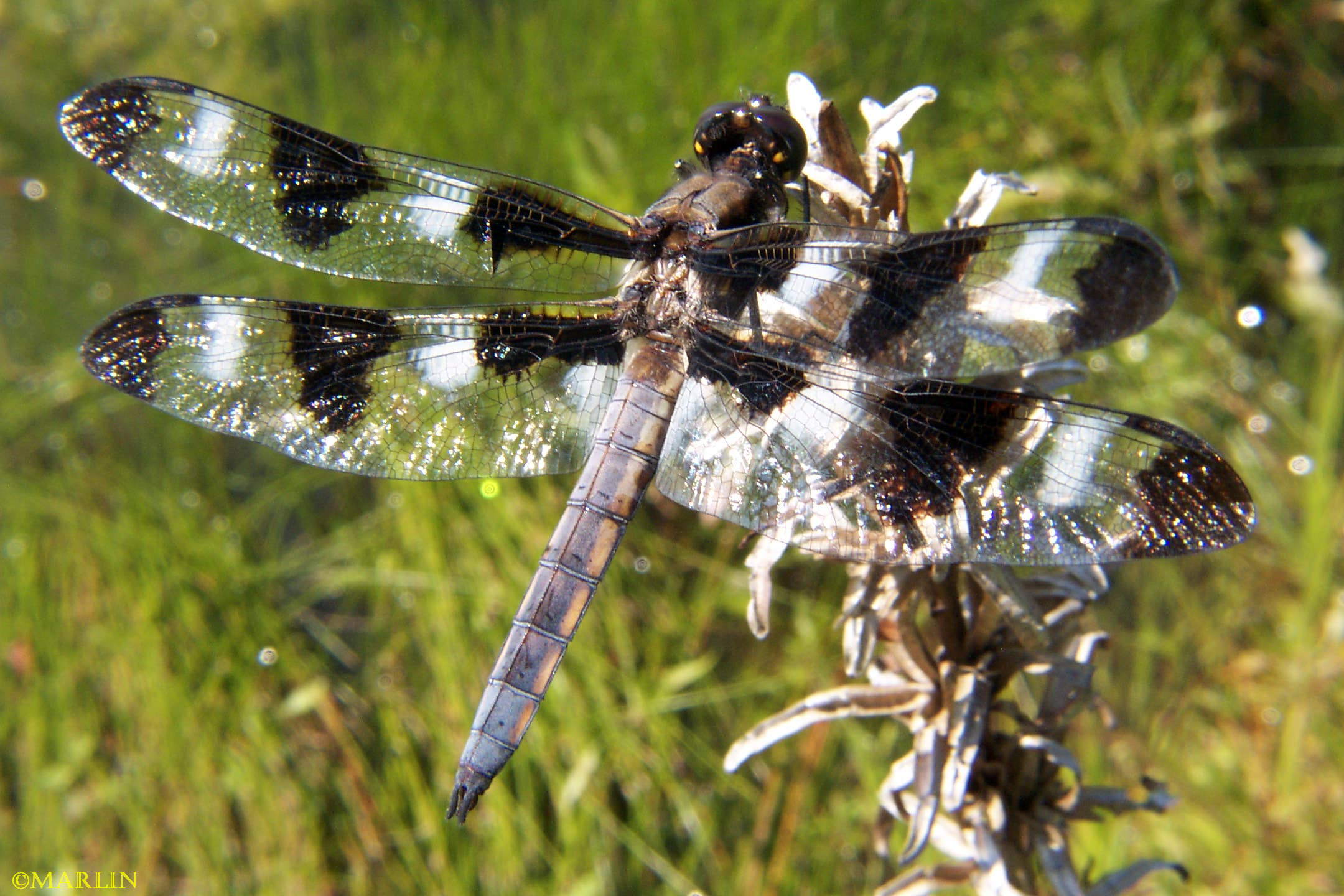 12-spotted skimmer
12-spotted skimmer
Damselflies are similar to dragonflies, but the adults can be differentiated by the fact that the wings of most damselflies are held along the body when at rest. Furthermore, the hind wing of the damselfly is essentially similar to the forewing, while the hind wing of the dragonfly broadens near the base, caudal to the connecting point at the body. Damselflies are also usually smaller, weaker fliers than dragonflies, and their eyes are separated. Damselflies are generally smaller and not as robustly constructed as their brethren, the dragonflies, who frequently prey on them.
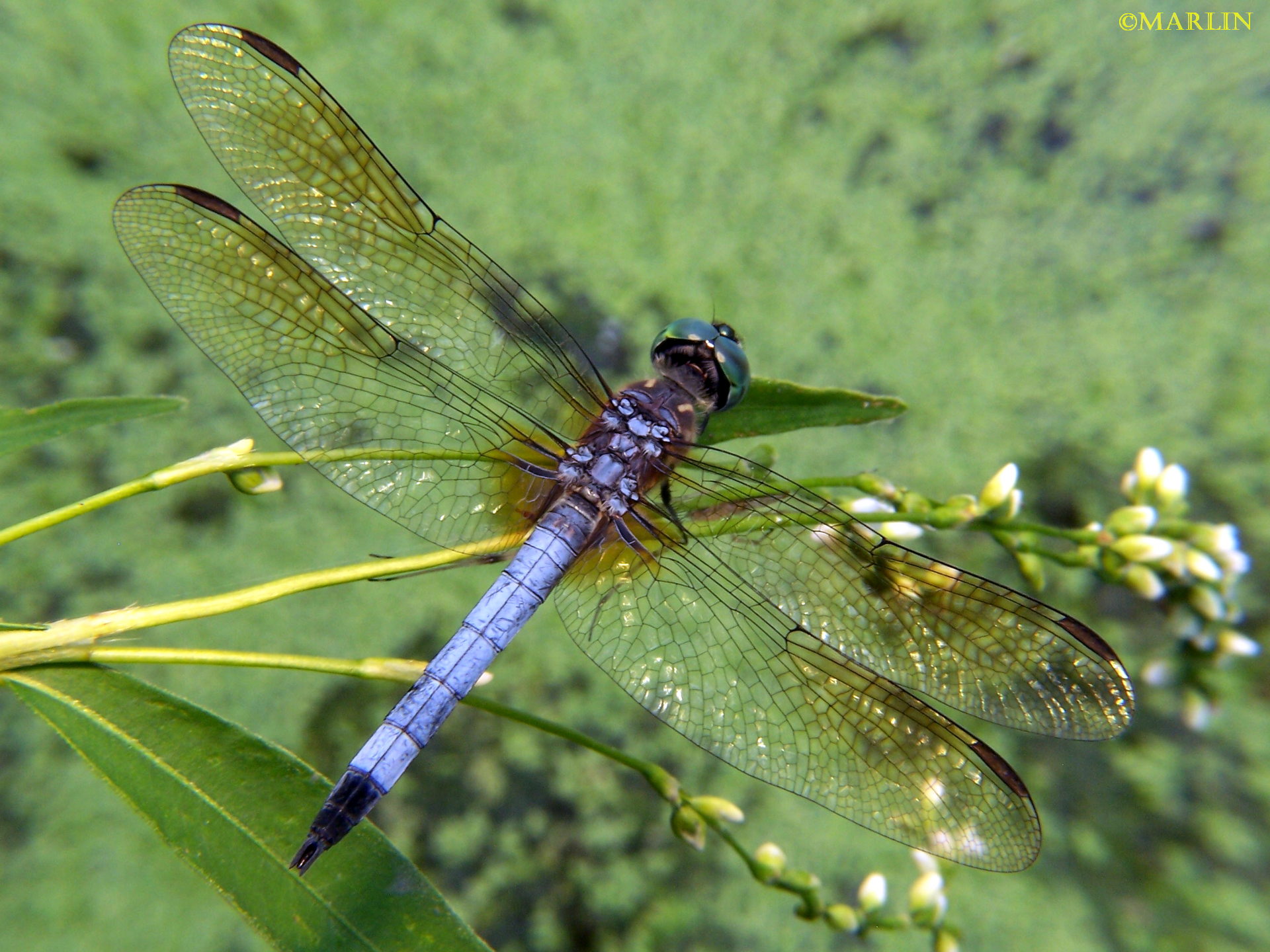 Blue dasher dragonfly male
Blue dasher dragonfly male
Dragonflies undergo incomplete metamorphosis, with an aquatic nymph stage. The female lays eggs in water, sometimes in underwater vegetation, or high in trees in bromeliads and other water-filled cavities. Nymphs are carnivorous, feeding on daphnia, mosquito larvae, and various other small aquatic organisms. The gills of damselfly nymphs are large and external, resembling three fins at the end of the abdomen. After molting several times, the winged adult emerges and eats flies, mosquitoes, and other small insects. Some of the larger tropical species are known to feed on spiders.
Plains clubtail female
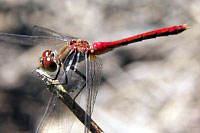 Ruby Meadowhawk Male |
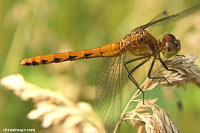 Ruby Meadowhawk Female |
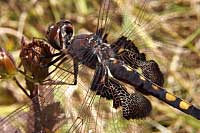 Black Saddlebags |
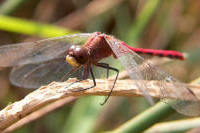 White Faced Meadowhawk |
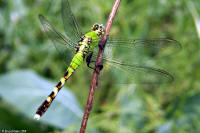 Eastern Pondhawk Female |
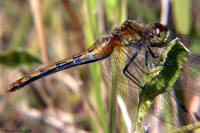 White Faced Meadowhawk |
 Blue Dasher Female |
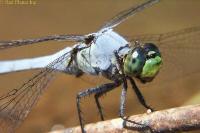 Eastern Pondhawk Male |
Dragonfly mating logistics seem to me one of the more ridiculous contrivances in the animal kingdom. I followed these two green darners around for more than an hour; its quite comical to see them fly in tandem hooked together thus. They are quite good at it, however.
Dragonflies are unique in the insect world in that the male possess a set of secondary sexual organs on the 2nd abdominal segments as well as his primary sexual apparatus on the 9th segment at the end of his abdomen. Before mating can occur, the male dragonfly must charge his secondary copulatory apparatus with sperm from his primary copulatory apparatus. Mating commences with the male grasping the female with his abdominal claspers. The pair then assume the wheel position with the tip of the females abdomen and thus her sexual apparatus engaging the males secondary copulatory apparatus. The male first uses his penis to remove any sperm left by a previous male before inseminating her himself.
Copulation can take from several minutes to several hours depending on species. The male stays in tandem with the female in many species while she lays her eggs. In those species which lay endophytically some lay below the water line, and in some cases both the male and the female may become fully submerged. In other species the male stays close to the female guarding her while she lays, while in those strongly territorial species the male may be satisfied by continuing to expel other males from his territory allowing the female to lay within the territory.
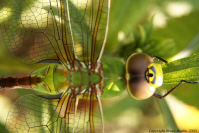 Green Darner Female |
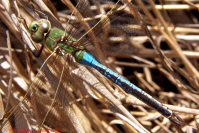 Green Darner Male |
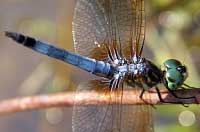 Blue Dasher Male |
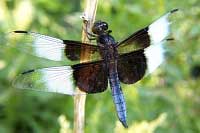 Widow Skimmer |
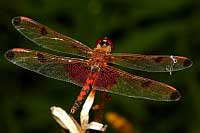 Calico Pennant Dragonfly |
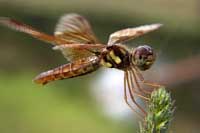 Eastern Amberwing |
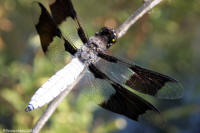 Common Whitetail |
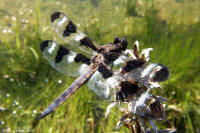 Twelve-spotted Skimmer |
Much larger dragonfly species existed in the distant past than occur on earth today. The largest, found as a fossil, is an extinct Protodonata named Meganeura monyi from the Permian period, with a wingspan of 70-75 cm (27.5-29.5 in). This compares to 19 cm (7.5 in) for the largest modern species of odonates, the Hawaiian endemic dragonfly, Anax strenuus. The smallest modern species recorded is the libellulid dragonfly, Nannophya pygmaea from east Asia with a wingspan of only 20 mm, or about ¾ of an inch. Dragonflies are the world’s fastest insects and, although estimates of their speed vary wildly, most credible authorities say they are capable of reaching speeds of between 30 and 60 km/h (19 to 38 mph). A study showed that dragonflies can travel as much as 85 miles in one day.
Insects | Odonata Index | Dragonflies | Damselflies | Odonata Main | Spiders

